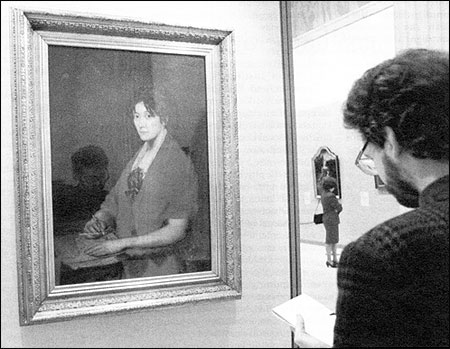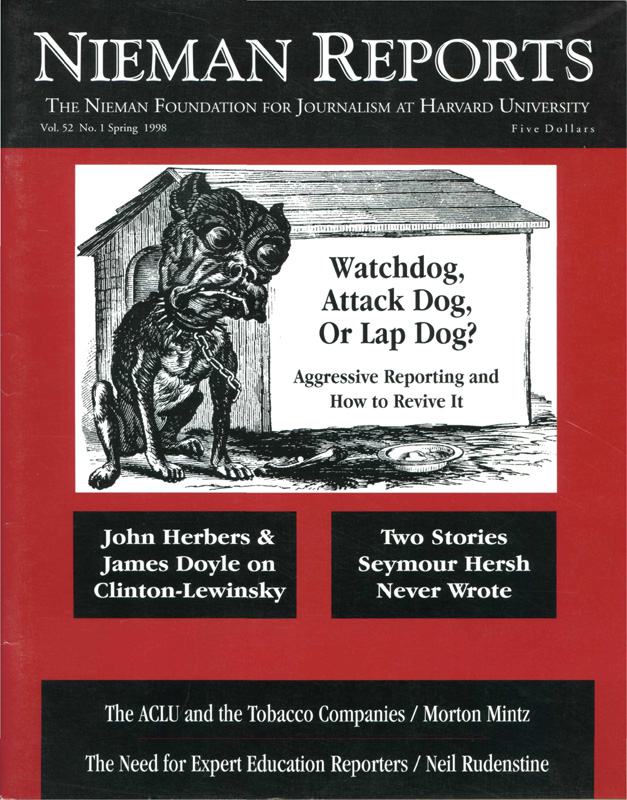
Francis Warm shows copy of records the Nazis kept of their pillaging of art from his great-uncle's estate in France. Many of the paintings are now in museums. Boston Globe Photo/Alastair Miller.
The fourth watchdog paper reports on nonprofit organizations. An example of the story possibilities is the work done by Walter Robinson of The Boston Globe in uncovering paintings seized by the Nazis that museums obtained under questionable circumstances.

A reporter taking notes in front of Francisco de Goya's "Female Portrait" at a preview of art treasures taken from Nazi Germany in World War II, at the Pushkin State Museum of Fine Arts in Moscow, Monday. February 27, 1995. Associated Press Photo.



